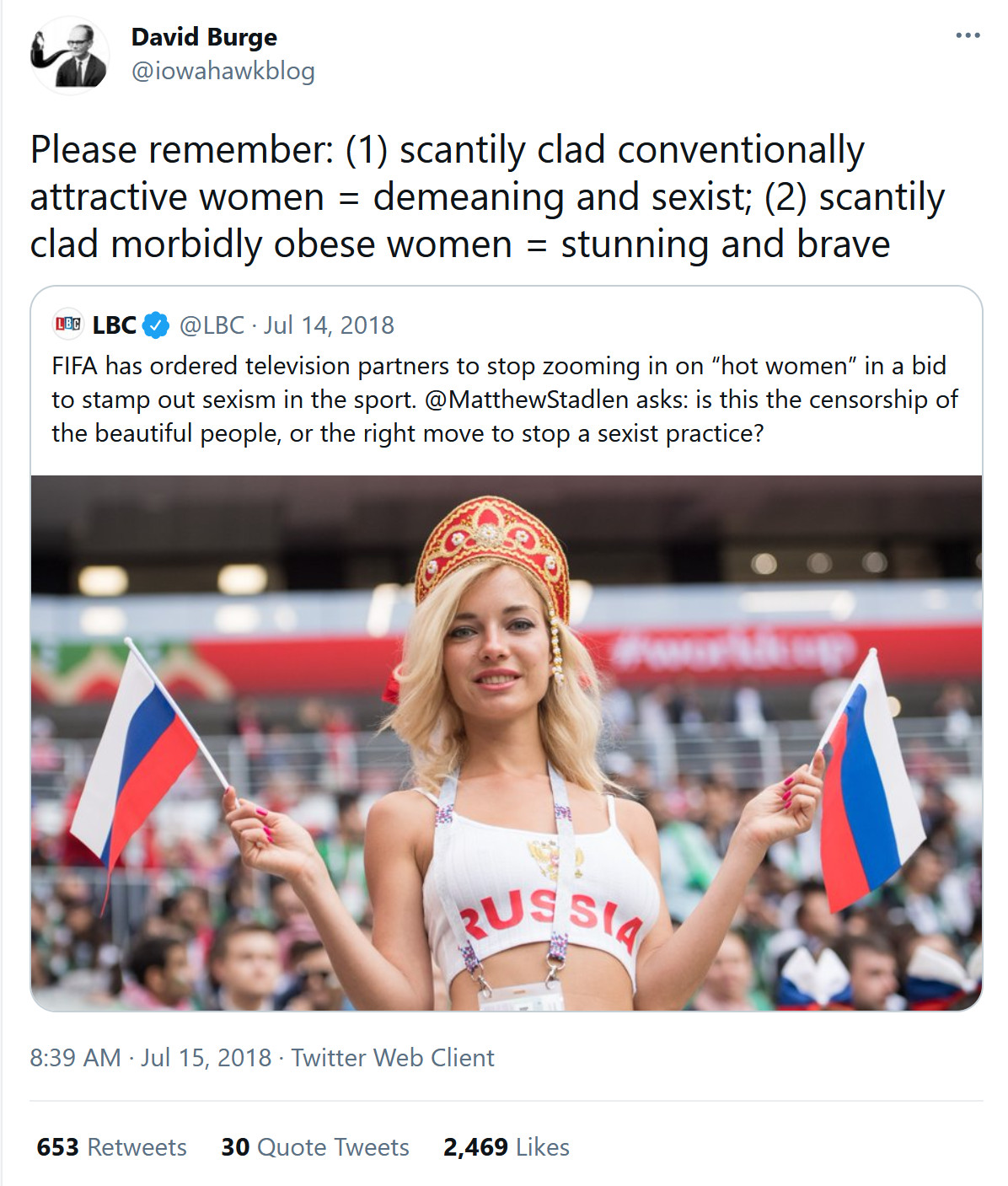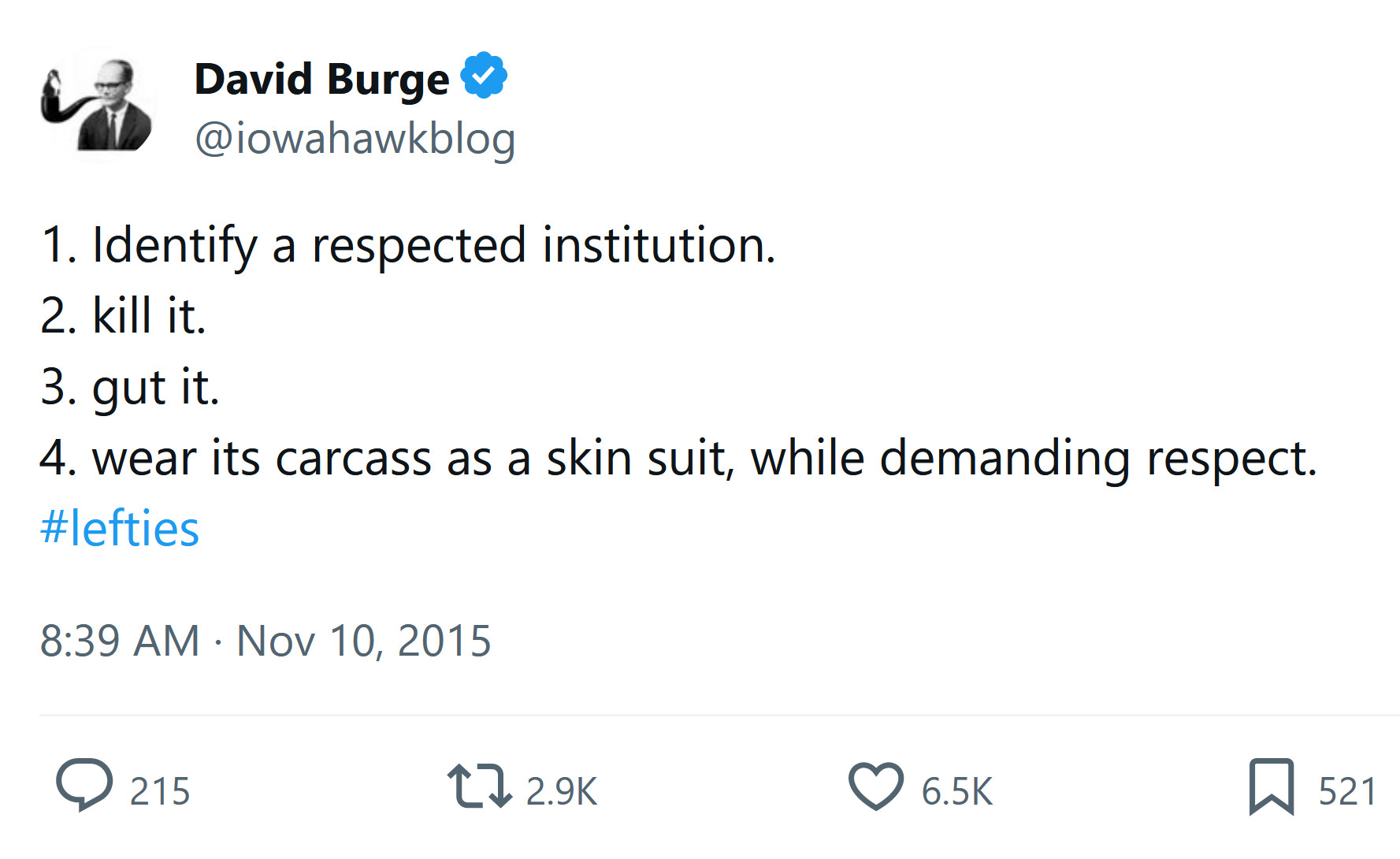YES — AND IN RESPONSE, THEIR APPEAL IS BECOMING MORE SELECTIVE: Sports Illustrated Hates You.
This year’s issue of the Sports Illustrated Swimsuit Edition is the 60th, and the magazine is celebrating by not featuring gorgeous women in skimpy swimsuits.
In fact, the magazine’s cover features a photo of women in evening gowns—at least, mostly women. These days you can never tell who will show up in the magazine pretending to be female.
Gail King, a noted sex symbol, is prominently featured. She snagged an interview with the magazine’s editor, who explained the shift away from featuring women in swimsuits to more woke content, featuring plus-size women and men cosplaying them.
“This ain’t your dad’s Sports Illustrated,” we are told. And this is supposed to be a good thing. The formerly unabashedly male publication prefers old, fat, Queer readers these days. Because they are the core audience for sports, just as woke white women are the core audience for comic book movies.
This is why they have been so successful.
SI has been, at least, successful in jettisoning its former readers–circulation is down by half. So at least their strategy of offending much of their audience is working. What publication would want to be patronized by heterosexual men these days?
Good riddance!
Of course, jettisoning readers isn’t so good for the bottom line. They have had massive layoffs and almost folded, being rescued at the last minute by a last-minute buyer.
Gayle King, 69, makes her Sports Illustrated Swimsuit Issue debut in sizzling one-piece: ‘Sexy isn’t an age’ https://t.co/STD6OzgTY2 pic.twitter.com/izolccisqc
— Page Six (@PageSix) May 14, 2024
Flashback: Leave Supermodels Alone!
The other night, after I’d had a little too much of this world, I decided to bathe in cleansing waters and scour my soul by watching the new E! True Hollywood Story episode on Victoria’s Secret. (Yes, I know. Life is sad.)
Best I can tell, this investigative blockbuster was largely derived from a New York Times story from last year, subtly headlined, “Angels in Hell: The Culture of Misogyny Inside Victoria’s Secret.” The gory particulars of both the article and the E! documentary were enough to curl your hair, not unlike the bouncy locks of former VS model Jill Goodacre (a Victoria’s Secret OG). There were harrowing tales of handsy, lecherous executives, and of models getting ready for Objectification Fest (the once-hallowed Victoria’s Secret Fashion Show) by eating an apple a day with no sides. Ed Razek, the former chief marketing officer of Victoria’s Secret’s then parent company, L Brands, was so creepy, that he kept company with Jeffrey Epstein, the latter of whom posed as a Victoria’s Secret recruiter. It was all genuinely awful.
But perhaps most unsettling of all, according to the ominous narration, VS didn’t show a commitment to diversity of body types (women, you may have heard, come in all shapes and sizes!), and they continued to “market a standard of beauty that customers found male, stale, and hopelessly out of touch.” (Just imagine a woman so deluded, that she’d try to make herself attractive to a man while performing the sacred fourth-wave feminist rite of buying lingerie.) After hearing this last bit, I sat there in stone silence for what felt like hours, but was probably just a few minutes or so, until E! aired another rerun of The Bradshaw Bunch, in which former NFL great Terry Bradshaw “still stinging from their embarrassing loss last year…..coaches the family for a repeat appearance on Celebrity Family Feud.”
I hurt for my supermodel sisters. I asked a lot of unanswerable questions like, “Why, God, why?” Then I asked one last question, which you’re not supposed to utter in public: “Whatever happened to skinny, beautiful models, and will they be coming back any time soon?”
As Iowahawk likes to say:

And:

(Classical reference in headline.)
